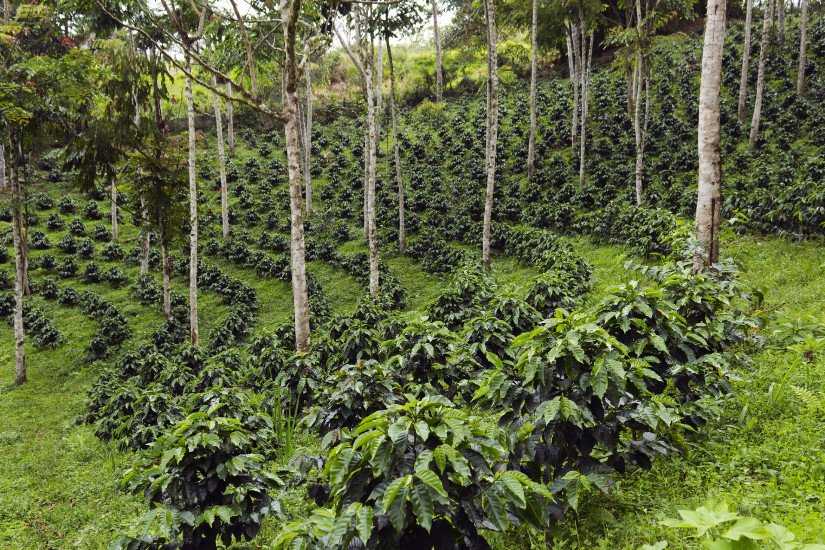Sometime in 2004, I received a copy of Living On The Wind: Across The Hemisphere With Migratory Birds by Scott Weidensaul.
The American naturalist writes in the book that one of the ways to save migratory songbirds, tropical plants and animals is to “have a cup of coffee”.
He says the “traditional form of coffee growing is beneficial for wildlife, especially birds”. The words stayed with me.
Through the book, I got to know the work of the late Russell Greenberg, an American ornithologist and founder of the Smithsonian Migratory Bird Center. In 1997, Greenberg’s work led to a unique coffee certification programme known as “Bird Friendly coffee”.
“Migratory birds are emblematic of the importance of coffee to both the local environments where it is grown and the global environment that we share.
Sipping a cup of coffee is a ritual that is played out millions of times a day throughout the world. It is an act that ties together consumer, retailer, roaster, broker, producer, and farm labourer in a complex relationship on which we rarely ponder,” writes Greenberg.
Closer home, some of the migratory songbirds make their winter home in the forests of the Western Ghats—a global biodiversity hot spot and an endemic bird area. Incidentally, this forest is also home to coffee estates.
Last month, while attending the Slow Food festival in Turin, Italy, Greenberg and Bird Friendly coffee flashed through my mind when I received an email from conservation biologist Krithi Karanth.
Karanth had done the inevitable: co-relating birds and coffee closer home in a recent research paper, stating that coffee plantations in the Western Ghats (along with those of rubber and areca) support 204 bird species (that’s approximately 16% of the bird species found in India).
Karanth’s study, Producing Diversity: Agroforests Sustain Avian Richness And Abundance in India’s Western Ghats, covered 187 plantations—30,000 sq. km of tropical rainforest.
Across the world, coffee is either shade-grown (in forest ecosystems) or sun-grown (in monoculture by clearing forests).
The research paper comes at a critical juncture when farmers in India are choosing quantity over quality, opting for sun-grown monoculture coffee rather than the traditional shade-grown, biodiversity-friendly rich coffee grown in the forest.
As winter approaches, the sky is filled with birds—millions of them—waterfowl, shorebirds, cranes, raptors and tiny songbirds—on their annual north-south winter migration.
As you read this, a number of birds would also be headed towards the subcontinent from their European breeding grounds.
Take the taiga flycatcher, a diminutive brown bird, all of 11cm. It’s difficult to comprehend how the tiny bird travels all the way from Siberia (the name comes from its breeding ground—the Taiga forest) to spend the winter in central India.
Some years ago, a female Bar-tailed Godwit made news for the longest non-stop flight from the Arctic to New Zealand, covering a distance of 11,500km in nine days. More dramatic is the flight of the Arctic Tern. Every year, it flies from Pole to Pole and back.
Every bird family has its own enigmatic tale. As actor and film-maker Jacques Perrin describes eloquently in Winged Migration (2001), an award-winning nature documentary film: “The story of migrating birds is a story of promise, a promise to return. They fly for a reason, to survive, and their migration is a fight for their life.”
Winter galvanizes bird watchers. In the coming months, birders from across the country will spread out far and wide to pursue their wish list, studying the ritual of migration.
In recent years, birding as a hobby has picked up among a diverse set of people. Every year, a new state comes forward to host bird festivals and promote birding tourism.
This year, Goa hosted its maiden bird fest from 11-13 November. From 2-4 December, it will be Uttar Pradesh’s turn. The state will try to replicate the success of last year’s inaugural bird fair at Chambal. Gujarat, Karnataka and Uttarakhand have held bird festivals, earlier.
Birders believe amateur bird photographers outnumber professionals and genuine birders (the old-fashioned ones with a pair of binoculars, a field guide and a notebook).
While more pairs of eyes (and cameras) have helped to gather information on species and habitats from hitherto unknown places, the advent of new technology has also created a subculture which does more harm than good by destroying nests and disturbing roosting birds.
Smartphones and Bluetooth speakers are regular fixtures with novice birders. Unscrupulously or unknowingly, pre-recorded bird calls are played incessantly until the elusive bird emerges from the dense undergrowth and the photographer gets that prized shot.
Sadly, very few know what the call means to the unsuspecting bird—a distress call to protect its kin, a courtship call to find a mate or a social call to keep the flock together.
The ugly side of a delightful hobby might just need a coffee break.
Ananda Banerjee

















 CAPS: the new proprietary system using capsules made of 85% recycled aluminium
CAPS: the new proprietary system using capsules made of 85% recycled aluminium